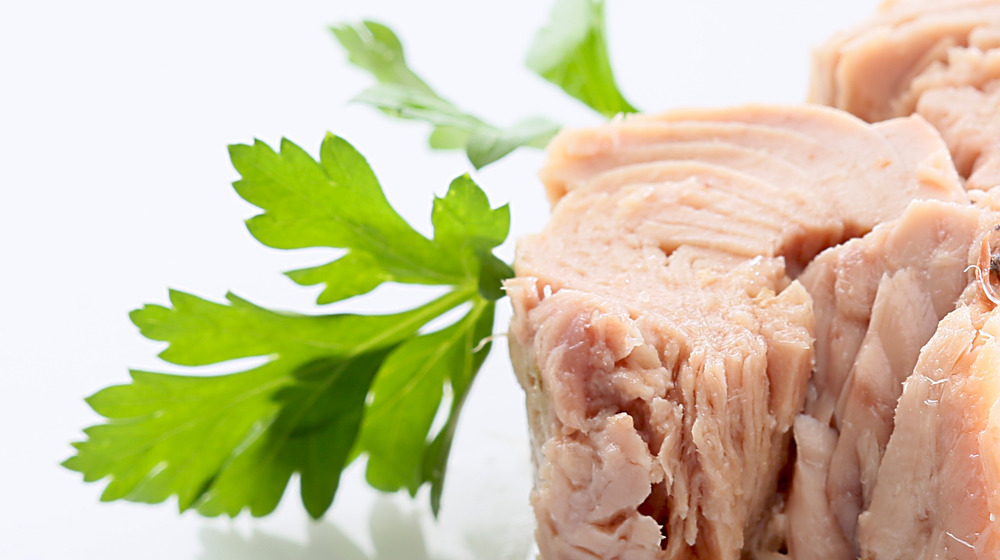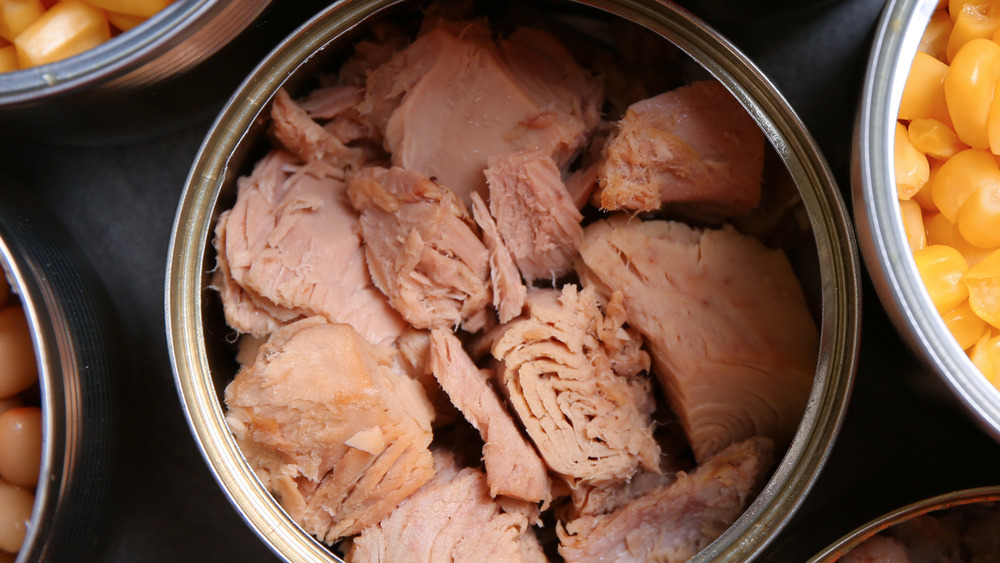This Is How You Should Really Be Storing Canned Tuna
Stocking up on shelf-stable foods might seem like a no-brainer for meal planning, sticking to your budget, and minimizing your trips to the store. But you might want to put in at least a little bit of thought to how you store your pantry supplies — especially proteins like tuna.
Canned tuna is one of the smartest items you can stock up on. It's packed with protein (up to 8 grams per ounce, according to Healthline), loaded with omega-3 (Livestrong cites canned tuna as an excellent source of fatty acids) and can last in the pantry for months if stored correctly.
Per Spruce Eats, a cool pantry or cabinet is best for keeping canned tuna; avoid a spot over the stove or any other place that collects heat. Be mindful of expiration dates both when you buy tuna and when you store it. If you're buying for use that week, you won't need to worry much, but if you're laying in stock, try to get cans with further off dates to give you more time to use them. There's nothing worse than thinking you've got what you need for a pantry staple dinner only to realize the "best by" date already came and went.
First In, First Out means less food waste
When you get your groceries home, before shoving them into the cupboard, take a moment to look at what's already there. As Food Hero notes, using the First In, First Out method (FIFO) will help you get the most out of your groceries. Essentially, you should move the oldest items in the cupboard to the front of the queue. To put the system to work, take the cans you already have out of the cupboard, add the new ones to the back, and then put the older ones in front.
It may seem like an extra hassle, especially when grocery shopping is already such an ordeal, but a few extra minutes here and there will save you in food costs by reducing waste, and you won't have to think about it when you reach for a can to whip up a batch of tuna salad.
Once a can of tuna has been opened, any unused portion will need to be refrigerated. To avoid a "tinny" taste, Eat Right advises transferring the remaining tuna to a separate (air tight) container before popping it in the fridge and to use it up in the next day or two.

